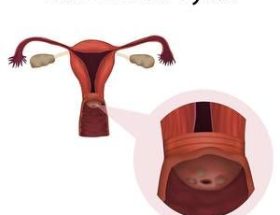Breast health is a crucial aspect of a woman’s overall well-being. Regular awareness of breast health can help in the early detection and treatment of breast-related issues, including breast cancer. One of the most effective tools in this regard is mammography, a specialized medical imaging technique that can detect breast abnormalities before any symptoms manifest. In this article, we will explore the importance of breast health and the role of mammography in maintaining it.
The Importance of Breast Health
Maintaining good breast health is essential for women of all ages. Regular breast self-examinations, clinical examinations, and mammograms can aid in early detection, which is vital in preventing breast cancer and other abnormalities. While certain risk factors, such as age and genetic predisposition, cannot be controlled, adopting a healthy lifestyle can significantly contribute to overall breast health.
Breast Self-Examination
A breast self-examination involves checking one’s breasts regularly for any changes or abnormalities. This should be performed at least once a month, preferably a few days after the end of menstruation when the breasts are less tender and swollen. To perform a self-exam, stand in front of a mirror and visually inspect both breasts, looking for changes in size, shape, or skin texture. Raise your arms and look for any visible signs of dimpling or fluid leakage. Lastly, lie down and use your fingertips to feel for any lumps or thickening in the breast tissue.
Clinical Examinations
Clinical examinations are conducted by healthcare professionals and are crucial in assessing breast health. During a clinical examination, a doctor or nurse will perform a physical examination of the breasts and surrounding areas, looking for any lumps, changes, or abnormalities. They may also check the lymph nodes under the armpit and collarbone areas. Clinical examinations should be done annually, or as recommended by a healthcare provider.
Mammography: The Gold Standard
Mammography is a specialized X-ray imaging technique used to visualize breast tissue. It is considered the gold standard for breast cancer screening and detection, as it can identify abnormalities long before they are palpable. Mammograms can detect calcifications, masses, or architectural distortions that may indicate the presence of breast cancer or other benign conditions.
How Does Mammography Work?
During a mammogram, the breast is compressed between two plates, and X-rays are taken from different angles. The compression ensures that all breast tissue is spread out, reducing overlap and allowing for better visualization. The X-rays captured create detailed images of the breast, which are then examined by a radiologist.
When Should Mammograms Begin?
The recommended age to start mammography screenings varies among different organizations. However, many suggest starting at the age of 40 for average-risk women. Those with higher risk factors, such as a family history of breast cancer, may begin screenings earlier. It is important to consult with a healthcare provider to determine the most appropriate screening schedule based on individual circumstances.
Benefits and Limitations of Mammography
Mammography offers several benefits in the early detection of breast abnormalities. The ability to detect breast cancer early means more treatment options and a higher likelihood of successful outcomes. However, it is essential to note that mammography also has limitations. Dense breast tissue can sometimes hide abnormalities, leading to false-negative results. False-positive results can also occur, leading to additional testing and unnecessary anxiety. It is crucial to follow up any abnormal mammogram results with further evaluation.
Conclusion
Breast health is a significant aspect of women’s overall well-being, and regular monitoring and mammography play vital roles in maintaining it. By practicing breast self-examinations, undergoing clinical examinations, and following recommended mammography screenings, women can increase their chances of early detection and successful treatment of breast abnormalities. Remember, early detection saves lives, so prioritize your breast health starting today.









